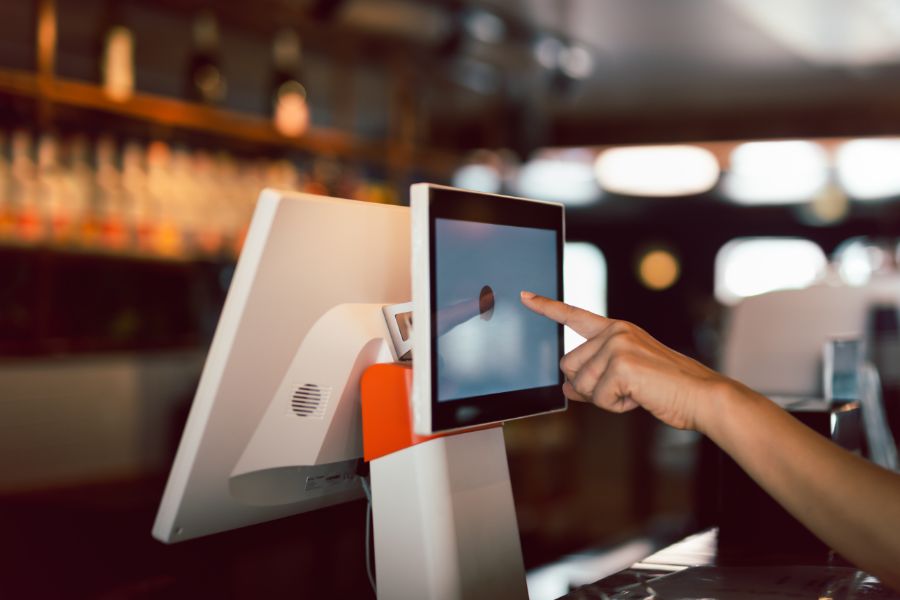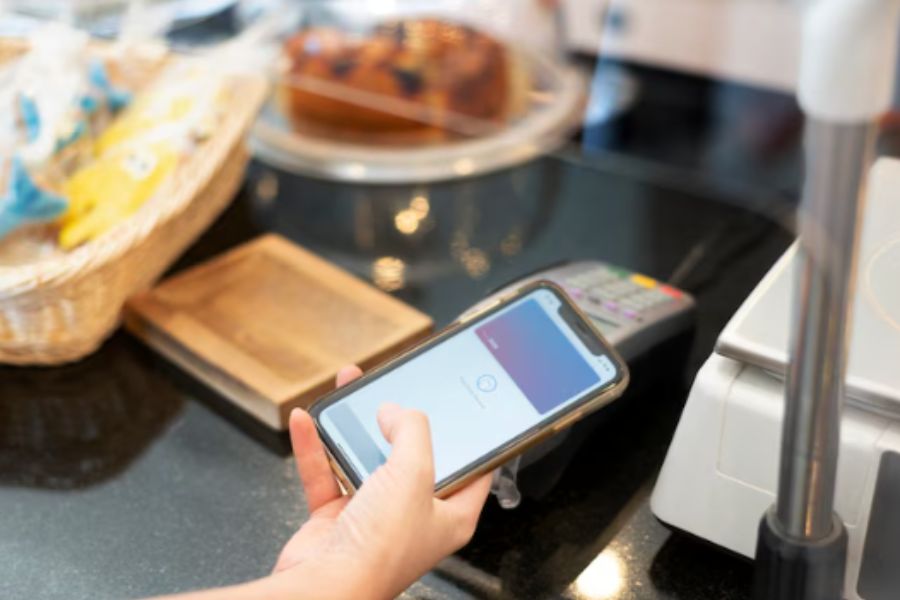In the dynamic landscape of modern retail, the key to success lies in seamlessly integrating technology to enhance customer experiences and streamline operations. Among the myriad of solutions available, Shopify Point of Sale (POS) stands out as a game-changer, empowering businesses to bridge the gap between online and brick-and-mortar operations. This integration is not merely a technical enhancement; it’s a strategic move that can revolutionize the way retailers connect with their customers, manage inventory, and drive sales.
Whether you’re a seasoned retailer exploring new avenues or an entrepreneur launching your first store, the power of Shopify POS software integration awaits your discovery. Join us on this journey to unleash retail success in the digital age.
What is Shopify POS software? How does it work?
Understanding the Basics of Shopify POS Software
Shopify POS, or Point of Sale, is a robust software solution designed to streamline the retail experience for both online and brick-and-mortar stores. At its core, Shopify POS acts as a central hub where inventory management, sales processing, and customer engagement seamlessly converge.
The strength of Shopify POS stems from its capability to seamlessly integrate with the Shopify ecommerce platform. This enables you to efficiently oversee inventory and sales data across both your online and physical retail outlets, all from a unified location. Shopify POS offers an extensive range of customization options, including the ability to design tailored receipts, establish customer loyalty programs, and provide personalized discounts and promotions. This presents numerous possibilities to align the retail customer experience with the essence of your brand.
How Does Shopify POS System Work?
To comprehend the functionalities of Shopify POS, it’s essential to delve into its core mechanisms. The system operates by integrating with various hardware components such as barcode scanners, receipt printers, and card readers, creating a unified ecosystem for retail operations.
- Inventory management: Shopify POS excels in simplifying inventory management. The system syncs seamlessly with the online store’s product catalog, ensuring real-time updates on stock levels. This feature eradicates the challenges associated with over-selling or under-selling products, providing a unified inventory view across all sales channels.
- Sales processing: The heart of any retail operation lies in its ability to process sales efficiently. With Shopify POS, businesses can accept payments, issue receipts, and manage transactions effortlessly. The system supports multiple payment methods, including credit cards, cash, and digital wallets, offering flexibility to both retailers and customers.
- Customer engagement: In the digital age, fostering customer relationships is paramount. Shopify POS go beyond traditional point-of-sale systems by incorporating robust customer engagement features. This includes the ability to create customer profiles, track purchase history, and implement loyalty programs. These features not only enhance the customer experience but also empower retailers with valuable insights into consumer behavior.
Pros and cons of integrating retail with Shopify POS
As you know, Shopify POS software is a popular point-of-sale (POS) system for small businesses for good reason. So, do Shopify POS systems have pros and cons? Now, let’s explore this part to find out the detailed answer
Pros of integrating retail with Shopify POS
Here are the benefits that Shopify POS brings to the business:
- Unlocking success across channels: Implementing an omnichannel selling strategy becomes effortlessly achievable with Shopify POS. The integration of online and retail operations provides customers with the flexibility to choose their preferred shopping channels. Simultaneously, this approach enables businesses to reach a wider audience, unlocking the full potential for maximizing sales.
- Elevating sales potential: Shopify POS empowers businesses to broaden their horizons by accepting a variety of payment options, including credit cards, debit cards, and popular mobile payment methods such as Apple Pay and Google Pay. Offering diverse payment choices caters to customer preferences, creating a seamless checkout experience that enhances customer satisfaction and reduces barriers to purchase.
- Streamlined inventory management: Effortlessly manage your inventory with Shopify POS. The system facilitates real-time tracking and updates, providing invaluable insights into stock levels. Receive timely notifications when products are running low to prevent overselling and ensure optimal stock levels that align with customer demand.
- Simplifying order management: Managing orders becomes a breeze with Shopify POS. Process orders, print receipts, and generate invoices—all from a single, centralized platform. This streamlining of the order fulfillment process contributes to a seamless buying experience for customers. Additionally, functionalities such as order tracking, handling returns, and managing exchanges are seamlessly integrated, simplifying overall order management.
- Unleashing customer insights: Shopify POS revolutionizes the collection of customer data. By capturing comprehensive customer information and purchase history, businesses gain a deeper understanding of customer preferences and behavior. This wealth of data becomes a powerful tool for fueling personalized marketing campaigns, strengthening customer retention efforts, and elevating the overall shopping experience. Businesses adopting Shopify POS often experience a notable boost in customer satisfaction, fostering increased customer loyalty and repeat business.
- Unleashing growth potential: Shopify POS seamlessly scales to accommodate the growth of your business. Effortlessly managing an expanding number of transactions, staff members, and inventory, the platform establishes scalability as a cornerstone for supporting your business’s evolving needs. Furthermore, Shopify’s extensive app marketplace offers a myriad of apps and integrations, empowering businesses to efficiently manage operations and maximize growth potential.
- Integrating with Third-party tools: Empower your business by seamlessly integrating Shopify POS with a diverse range of third-party tools. Whether for accounting, email marketing, analytics, or other functionalities, this capability allows you to customize the system according to your unique business requirements. By leveraging third-party integrations, businesses can unlock the full potential of Shopify POS and tailor it to suit their specific needs.
Challenges of integrating retail with Shopify POS & how to overcome them
Besides advantages, Shopify POS is not without challenges:
- Pixel tracking: Setting up a new system, integrating hardware, and configuring software can feel overwhelming. Shopify addresses this by providing detailed documentation, step-by-step guides, and video tutorials to assist businesses during setup. Reliable customer support is also available to answer technical questions and offer guidance.
- Training and familiarization: To effectively use Shopify POS, employees may need training. Shopify tackles this challenge with comprehensive resources, including online courses and workshops, enabling businesses to educate their staff and maximize the utilization of Shopify POS features.
- Seamless data migration: Transferring product catalogs, customer data, and inventory information to Shopify POS can be complex. Shopify simplifies this process with robust tools and data migration services, offering import/export functionalities and integrations with various systems for a smooth transition.
- Integration with existing systems: For businesses using other systems like accounting for inventory management, integrating them with Shopify POS is seamless. Shopify provides a variety of integrations and APIs, enabling smooth connections between Shopify and third-party systems.
Guide to installing Shopify POS integration correctly
To ensure optimal functionality tailored to your specific needs, it is essential to install Shopify POS correctly. Follow the guide below to ensure a smooth setup and promptly start using Shopify POS.
Step 1: Choose the right hardware
Select a compatible device that meets Shopify POS’s minimum system requirements. Recommended options include iPads or iPhones running iOS 12.0 or later, or Android devices.
Step 2: Install the Shopify POS app
Download the Shopify POS app from the App Store (for iOS devices) or Google Play Store (for Android devices).
Step 3: Set up your Shopify account
If you already have a Shopify account, sign in to the app using your existing credentials.
If you don’t have an account, sign up for a free trial directly from the app.
Step 4: Connect your hardware
Connect any necessary hardware devices, such as card readers or receipt printers, to your chosen device.
Ensure the hardware is compatible with Shopify POS and follow the manufacturer’s instructions for connection.
Step 5: Set up your products
Add your products to your Shopify store. This can be done manually or by importing them using a CSV file.
Ensure that all product details, including prices, images, and descriptions, are accurate. Find more information on the Shopify support page.
Step 6: Customize your storefront
Personalize your storefront to align with your brand and product offerings.
Explore the available templates and themes provided by Shopify POS and select the one that suits your preferences.
Customize elements such as the logo, color scheme, and layout to create a cohesive and visually appealing storefront.
Top 5 POS systems work best with Shopify
For Shopify users, integrating a POS that complements the platform’s capabilities can be a game-changer. Now, we will explore the top 5 POS systems that work seamlessly with Shopify, enhancing your overall business efficiency and customer experience.
ConnectPOS
ConnectPOS stands out as a powerful POS solution that effortlessly and seamlessly integrates with Shopify. With its robust and user-friendly feature set, ConnectPOS enhances your in-store and online operations, providing a unified platform for managing inventory, sales, and customer relationships.
Here are key features:
- Real-time synchronization: Enjoy the benefits of real-time synchronization between your online store and physical outlets. Any changes in inventory, pricing, or product information are instantly reflected across all channels.
- Multi-store management: For businesses with multiple locations, ConnectPOS simplifies management by allowing you to oversee all your stores from a centralized dashboard. This feature is particularly beneficial for tracking sales, analyzing performance, and maintaining consistency in product offerings.
- Customizable checkout: Tailor the checkout process to meet your specific business needs. From personalized receipts to multiple payment options, ConnectPOS ensures a smooth and branded customer experience.
ConnectPOS seamlessly integrates with Shopify POS software, offering a holistic solution for businesses looking to streamline their operations. The integration enhances inventory management, order processing, and customer engagement, making it a top choice for Shopify users.
Erply
Erply positions itself as a comprehensive POS system designed for retail businesses of all sizes. Its integration with Shopify extends the platform’s functionality, making it an ideal choice for those seeking a feature-rich POS solution.
Here are some key features:
- Inventory management: Erply offers advanced inventory management capabilities, allowing you to track stock levels, manage suppliers, and set up automated reordering processes. This ensures that your Shopify store reflects accurate product availability.
- Customer relationship management (CRM): Build stronger customer relationships with Erply’s CRM features. Track customer preferences and purchase history, and offer personalized promotions to enhance customer loyalty.
- Employee management: Effectively manage your staff with Erply’s employee management tools. Assign roles, track performance, and streamline communication to optimize your team’s productivity.
Erply seamlessly integrates with Shopify, providing users with a unified platform for managing both online and offline sales channels. The integration enhances data accuracy, reduces manual tasks, and improves overall operational efficiency.
Selly
Selly is a user-friendly POS solution designed to simplify the sales process for Shopify merchants. Its intuitive interface and seamless integration with Shopify make it a popular choice for businesses looking for a straightforward yet powerful POS system.
Here are some key features:
- Easy setup: Selly boasts a quick and hassle-free setup process, allowing merchants to start selling in no time. The intuitive design ensures that even those without extensive technical knowledge can navigate the system effortlessly.
- Mobile accessibility: Access your Shopify POS system on the go with Selly’s mobile compatibility. Whether you’re at a trade show or managing a pop-up shop, Selly ensures that you can make sales from anywhere.
- Payment flexibility: Selly supports various payment methods, including credit cards and mobile payments. This flexibility caters to a diverse customer base, enhancing the overall shopping experience.
Selly seamlessly integrates with Shopify, providing a user-friendly interface for managing sales, inventory, and customer data. The integration enhances the overall Shopify experience by simplifying day-to-day operations.
DeskPOS
DeskPOS focuses on providing an efficient in-store POS solution for Shopify users. With features tailored to the needs of brick-and-mortar businesses, DeskPOS aims to optimize the retail experience both online and offline.
Here are DeskPOS’s features
- Offline mode: DeskPOS ensures that your business can continue to operate smoothly even in the absence of an internet connection. This is particularly beneficial for retailers who rely on Shopify for in-store transactions.
- Sales analytics: Gain valuable insights into your business performance with DeskPOS’s analytics tools. Track sales trends, identify popular products, and make informed decisions to drive growth.
- Customizable receipts: Personalize your customer interactions by creating branded and customizable receipts. This not only adds a professional touch but also reinforces your brand identity.
DeskPOS seamlessly integrates with Shopify, providing retailers with a comprehensive solution for managing in-store sales. The integration enhances the efficiency of order processing, inventory management, and customer engagement.
Stocky
Stocky focuses on one critical aspect of business operations: inventory management. With its integration with Shopify, Stocky provides merchants with powerful tools to optimize stock levels, reduce carrying costs, and enhance overall supply chain efficiency.
Here are some features
- Automated reordering: Stocky’s automated reorder feature ensures that you never run out of popular products. Set reorder points and let Stocky take care of restocking, minimizing the risk of stockouts.
- Inventory forecasting: Make data-driven decisions with Stocky’s inventory forecasting tools. Anticipate demand, identify slow-moving items, and optimize your inventory to maximize profitability.
- Supplier management: Streamline communication with suppliers and track order statuses with Stocky’s supplier management features. This ensures a smooth supply chain process and minimizes delays.
Stocky seamlessly integrates with Shopify, offering a specialized solution for inventory management. The integration enhances order fulfillment, reduces holding costs, and ensures that your Shopify store reflects accurate product availability.
Conclusion
In conclusion, the integration of Shopify POS into your retail operations can be a transformative step towards enhancing customer experiences, streamlining operations, and unlocking the full potential of your business. With the right POS system that seamlessly integrates with Shopify, you can achieve a unified and efficient retail ecosystem, catering to the needs of both online and brick-and-mortar channels. Feel free to contact us if you have any questions related to Shopify POS software.



